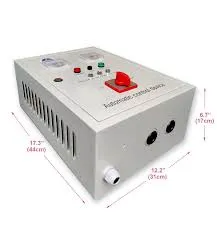The Importance of Warehouse Marking Tape in Logistics and Inventory Management
In the world of logistics and inventory management, efficiency and organization are paramount. One crucial tool that plays a significant role in achieving these goals is warehouse marking tape. This specialized tape helps establish clear visual cues within a warehouse environment, significantly contributing to improved workflow and safety.
What is Warehouse Marking Tape?
Warehouse marking tape is a type of adhesive tape designed specifically for use in storage facilities, distribution centers, and manufacturing plants. It is available in various colors, sizes, and textures to suit different environments and applications. The tape is often made from durable materials that can withstand heavy foot traffic and resist wear and tear, making it ideal for long-term use in warehouses.
Enhancing Safety and Efficiency
One of the primary functions of warehouse marking tape is to create a safer working environment. By marking pathways, hazard zones, and storage locations, businesses can minimize the risk of accidents and injuries. For instance, brightly colored tape can indicate walkways or forklift paths, reminding employees to be aware of their surroundings. Additionally, clearly marked areas for hazardous materials help ensure that everyone complies with safety regulations and minimizes exposure to dangers.
Efficiency is another critical benefit of marking tape. In a busy warehouse, time is of the essence. Employees need to be able to locate items quickly and efficiently. Using marking tape to designate specific areas for different products or equipment can streamline this process. For example, creating a dedicated section for seasonal items or a clearly labeled zone for shipping supplies reduces the time spent searching for products, thus increasing overall productivity.
Organization and Inventory Management
warehouse marking tape

Effective inventory management relies heavily on organization, and warehouse marking tape plays an essential role in this regard. By using colored tape to categorize products or define storage areas, warehouses can implement a more systematic approach to inventory control. This organization reduces the likelihood of errors when picking orders and helps keep track of stock levels.
For instance, a company might use red tape to signify expired or slow-moving inventory and green tape for fast-moving items. This visual differentiation allows warehouse staff to assess stock levels at a glance and make informed decisions about reordering, rotation, and storage. As a result, companies can improve turnover rates and reduce waste, leading to a more efficient supply chain.
Customization and Versatility
One of the standout features of warehouse marking tape is its versatility and customization options. Businesses can choose from a wide range of colors, patterns, and even printed tape that includes labels or symbols. This customization allows companies to develop a marking system tailored to their specific needs and workflows. In addition, the tape can easily be removed and repositioned, making it adaptable to changing warehouse layouts or processes.
Moreover, warehouse marking tape can be used in conjunction with other organizational tools, such as signs and labels, to create a comprehensive visual management system. By combining these elements, warehouses can enhance their operational efficiency and create a more organized work environment.
Conclusion
In summary, warehouse marking tape is an invaluable tool for any business looking to improve safety, efficiency, and organization in its logistics and inventory management. By providing clear visual cues, it helps to reduce accidents, streamline processes, and improve overall productivity. The versatility and customizable nature of marking tape make it a practical solution for any warehouse environment. As businesses strive for greater efficiency in an increasingly competitive market, investing in simple yet effective tools like warehouse marking tape is an essential step toward achieving organizational excellence.
-
XIANGFAN Rubber Tape-Ultimate Solutions for All Your Insulation NeedsNewsJun.24,2025
-
XIANGFAN Rubber Tape-Protection for Industrial and Residential ApplicationsNewsJun.24,2025
-
XIANGFAN Rubber Tape: Superior Safety and Sealing for Demanding EnvironmentsNewsJun.24,2025
-
XIANGFAN Rubber Tape: Reliable Solutions for Every Electrical ChallengeNewsJun.24,2025
-
XIANGFAN Electrical & Industrial Tape: Powering Reliability Across IndustriesNewsJun.24,2025
-
XIANGFAN Electrical & Industrial Tape: Excellence in Every ApplicationNewsJun.24,2025
